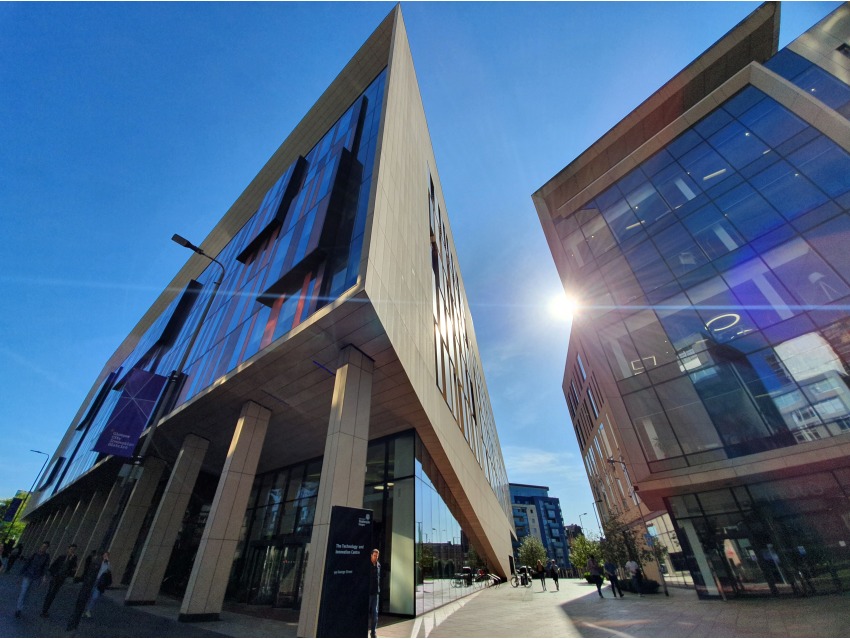Glasgow launches £30bn Greenprint for Investment
23rd Sep 2021

A portfolio of transformative climate investment projects to boost 2030 Net-Zero goal.
The City of Glasgow today launched its ‘Greenprint for Investment’, a £30bn portfolio of investment projects designed to give a significant boost to the city’s target to reach Net-Zero by 2030. In June, the city announced that it had reduced its carbon emissions by 41% since 2006, surpassing the 30% target Glasgow set for 2020.
The scale and diversity of the projects reflects and supports Glasgow’s global sustainability ambitions and provides international and activist investors with a mix of decarbonising and transformative development opportunities as well as more traditional robust, investor-ready propositions.
Cllr Susan Aitken, Leader of Glasgow City Council said:
“Glasgow is ready to meet the challenges of the climate emergency head on, addressing long-standing social, economic and environmental challenges around fuel poverty, poor connectivity and community blight whilst meeting our climate targets. Our Net-Zero future is about safer communities, warm and efficient homes, sustainable jobs and a prosperous economy. Transition has to be about the social and economic well-being of Glasgow and its people.
“This will require levels of investment never seen before in local government and adaptation plans which will be vital in delivering a modern, resilient and inclusive city economy. As a core element of Glasgow’s Green Deal, our ‘Greenprint’ brings together transformational, investable and shovel-ready projects. From an entire new transport system better connecting citizens to opportunities, generating renewable energy from the River Clyde and upgrading hundreds of thousands of homes across our city region, the Greenprint projects will deliver the infrastructure necessary for a low carbon, climate-resilient future.
“All cities face huge change. Glasgow’s challenges are typical of those of so many of our global peers. As cities rebuild to decarbonise, we can be the demonstrator in shaping those solutions. The success of COP26 will be measured by how cities can take the practical steps necessary to secure the future of our planet. Our Greenprint provides a major part of our roadmap to doing just that.”
The portfolio of projects outlined within the prospectus relate to four umbrella United Nations Sustainable Development Goals (SDGs): 8) Decent Work and Economic Growth; 11) Sustainable Cities and Communities; 13) Climate Action; and 17) Partnerships for the Goals. The SDGs are a blueprint to achieve a better and more sustainable future for all.
The 10 featured projects in the Greenprint are:
- Clyde Climate Forest: The Clyde Climate Forest aims to plant 18 million trees in Glasgow City Region over the next decade. That represents over 9,000 hectares (or 17,000 football fields) of new woodlands – increasing forest and woodland cover by 3% and will significantly increase the extent of atmospheric carbon sequestration through tree growth in the region.
- Glasgow City Region Home Energy Retrofit Programme: A ten-year £10 billion programme to upgrade the insulation of all homes in the Glasgow City Region to achieve net zero carbon emissions, give greater energy security, lower household energy bills, warmer homes and better health outcomes through reduced fuel poverty. The project explores the use of innovative renewable technologies to deliver clean energy.
- Glasgow’s District Heating Network: Glasgow is focused on transforming its energy production and consumption, scaling up the achievements of the £154 million Glasgow Recycling and Renewable Energy Centre (GRREC) to kick-start a wider district heating network. Two key projects in Polmadie and Gorbals Districts act as testbeds and a unique and innovative proposal to harness the power of the River Clyde for the city’s heat demands is underway.
- Climate Neutral Innovation District: The University of Strathclyde is leading an innovative and ambitious project to make the Glasgow City Innovation District 100% climate neutral and climate resilient. The collaboration between the University, Glasgow City Council and a range of other city stakeholders, will integrate 100% renewable heat, power, transport, climate adaptation and wellbeing solutions that will benefit citizens, businesses and organisations within the district, creating a unique ecosystem within the UK that drives carbon-neutral innovation.
- Charing Cross M8 Green Infrastructure Cap: Plans for this new, connected urban environment will revitalise and re-green the city’s public realm including a cap over a major interchange of the M8, the busiest motorway in Scotland.
- Glasgow Metro is a new transport provision that will improve connectivity within Glasgow and the wider City Region encompassing a population of 1.8 million by providing accessible and affordable connectivity for a wider skilled labour workforce, businesses and visitors.
- Advanced Manufacturing Innovation District Scotland: Scotland’s new home of advanced manufacturing with ambitions to drive the wider UK’s low carbon transition. With outline planning permission and on-site enabling works, this emerging centre of excellence and innovation is crucial to national and international carbon reduction efforts and is part of Scotland’s answer to balancing manufacturing requirements while meeting net zero commitments.
- Micro Park Apparel Project: In terms of apparel sustainability, over £365 billion of waste clothing is discarded each year, with a further £220 billion in lost revenue due to product markdowns. Micro Park will aim to create a new location for fashion production in the UK, embedding circularity across all areas of activity including resource use, textile and fibre reuse and packaging. Benefiting from Scotland’s high percentage of renewable energy supply, it will use 100% renewable energy, generate no liquid waste and have no negative environmental impacts.
- Scottish Event Campus (SEC) Expansion: Expansion plans including an ambitious energy concept aim to turn the SEC into one of the world’s most sustainable campuses and includes several globally competitive and cutting-edge conference and exhibition innovations. Investment will drive organisational targets to achieve net zero by 2035 with significant reductions by 2031.
- Green Regeneration and Innovation District: As Scotland’s first Green Regeneration and Innovation District, Clyde Gateway is working to decarbonise travel and energy for homes and businesses while providing the local community a place to live and work in a low carbon and resilient neighbourhood. Investment opportunities in this regeneration areas across all sectors including commercial, residential and hotel, will encourage circularity in the built environment.


